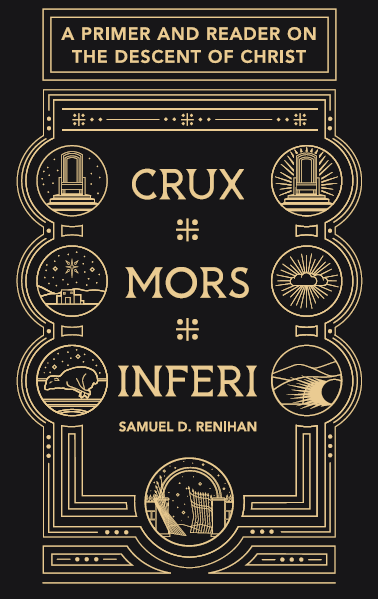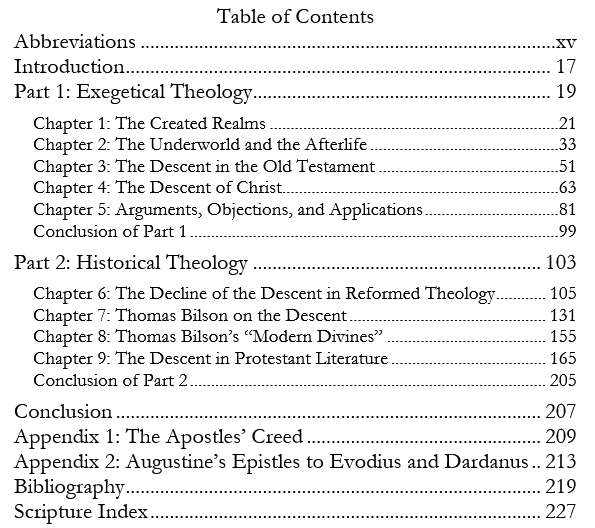I am pleased to announce my new book entitled Crux, Mors, Inferi: A Primer and Reader on the Descent of Christ.
Where was Christ’s soul between his death and resurrection? As its title suggests, Crux, Mors, Inferi (Cross, Death, Underworld) addresses that question. The first half of the book is a primer, comprised of five chapters presenting an exegetical argument for the descent of Christ to Sheol. The second half dedicates four chapters to historical theology, investigating the place of the descent in the Protestant tradition, especially the major influences and branches of the Reformed churches. The majority of this second half is a reader of sixteenth- and seventeenth-century sources relating to the descent. These sources represent a variety of views in dialogue with one another, including Lutherans, Reformed, the Church of England, and even Particular Baptists.
Two appendices and a Scripture Index complete the contents of the book, totaling 230 pages.
You can purchase it in three formats (Paperback, Hardcover, or Kindle eBook), here.
The talented artist who designed the cover is Benjamin Aho.


Very interesting! Thanks for this work.
Paul Dirks
Author of “Is There Anything Good About Hell? Release April 19.21
Hello Dr. Renihan,
I am a presbyterian looking into PB’s covenant theology and I stumbled upon the thoughts expressed in this book and have some questions. Concerning “old testament saints resting in the upper sheol before Christ came and brought them to heaven,” I am wondering if PB’s understanding of the covenant of grace necessarily leads to this understanding, though the confession itself seems not explicit on this matter.
Also, as the 2LBC ch31 states, the souls of the righteous would be “received into paradise, where they are with Christ, and behold the face of God in light and glory,” does the view that OT saints were prisoners of hope mean that they who rested in sheol were still in the presence of the pre-incarnate Son? Would this view affirm that OT saints were in union with the pre-incarnate Son?
Lastly, related to the first question, I am wondering how prevalent this view is among the PB’s, both historically and in modern days. Thank you and God bless!
Paul